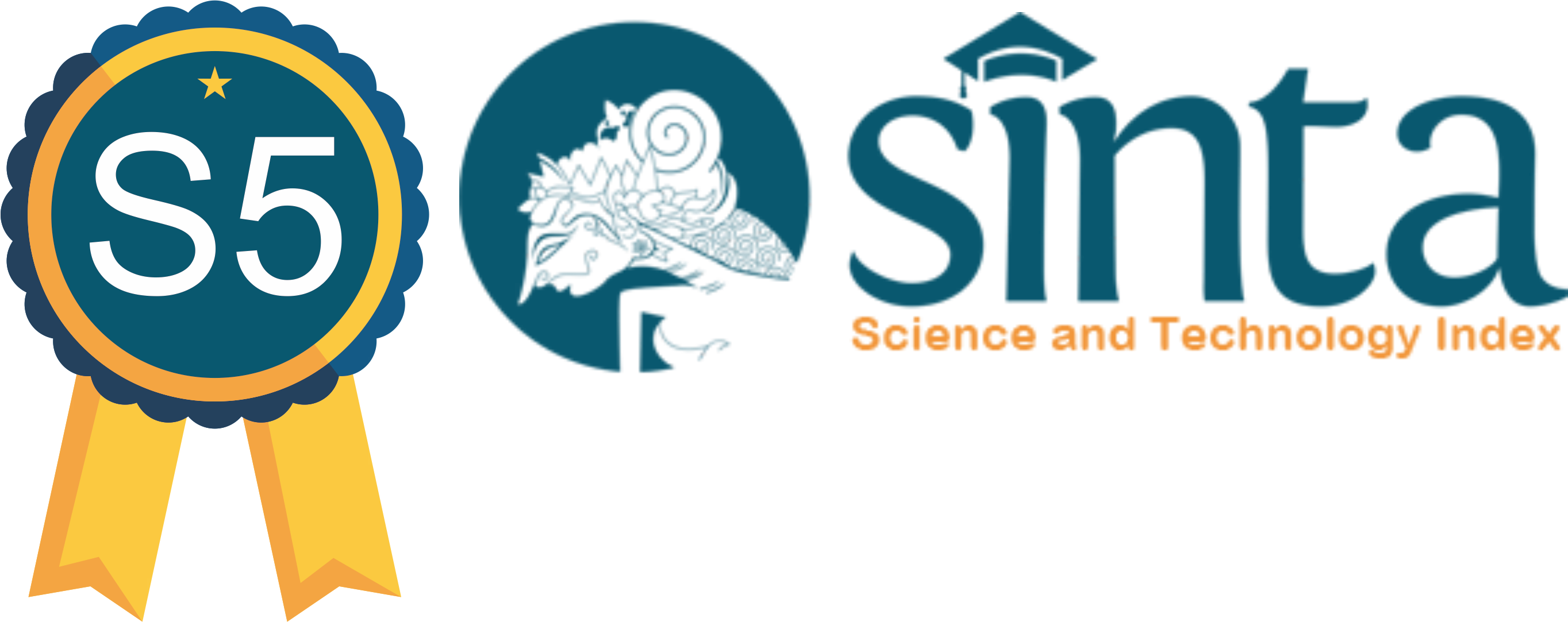The Dynamics of Self-Regulated Learning of Students from Rural Area: Study on the Impact of Ecological Changes
Abstract
This study examines the Self-Regulated Learning (SRL) of Wewewa students from Southwest Sumba, who are studying in Kupang, focusing on their adaptation to ecological changes. Using a mixed-methods approach, it combines qualitative phenomenological analysis and quantitative Likert scale surveys. Results show that most students prefer studying at night due to a quieter atmosphere and cooler temperatures. As many as 80% have at least intermediate-level technological skills, which facilitates access to digital learning resources. The dominant stress management strategies are exercise (65%), meditation (25%), and social support (10%). Findings indicate that urban ecological factors influence students' SRL and academic adaptation. This study highlights the need for institutional support programs to help rural students adapt to urban environments and provides insights into the relationship between environmental changes, learning strategies, and students' psychological well-being.
Downloads
References
Arifin, Z. (2018). Pendidikan Karakter dan Self-Regulated Learning: Upaya Meningkatkan Prestasi Akademik Mahasiswa. Jurnal Pendidikan Karakter, 8(1), 53-64
Azmi, S. (2016). Self Regulated Learning Salah Satu Modal Kesuksesan Belajar dan Mengajar. Jurnal Psikologi and Humanity, Vol. 15, 31-40.
Bandura, A. (2020). Guide for Constructing Self-Efficacy Scales. Information Age Publishing.
Creswell, J. W. (2018). Research design: Qualitative, quantitative, and mixed methods approaches (5th ed.). SAGA.
Dabone, K. T., Graham, Y. A., & Fabea, I. B. (2015). “Impact of Guidance and Counseling on Academic Performance”. Research on Humanities and Social Sciences, 5(8), pp. 225-227.
Djaali. (2019). Metode Penelitian Kuantitatif: Pendekatan Konseptual dan Praktik. Jakarta: PT Bumi Aksara.
Jaha, D. A. J., & Prasetia Ate, C. P. (2024). Manajemen Stres Pada Mahasiswa Semester Akhir Program Studi Pendidikan Bahasa Inggris Universitas Citra Bangsa. Hinef : Jurnal Rumpun Ilmu Pendidikan, 3(2), 276–282. https://doi.org/10.37792/hinef.v3i2.1334
Jaha, D. A. J., & Ate, C. P. (2024). Peran Self-Efficacy Dalam Penggunaan Teknologi Informasi Di Konteks Pendidikan: Studi Kasus Di SMKN 1 Kupang Barat . Jurnal Pendidikan Teknologi Informasi (JUKANTI), 7(2), 316–326. https://doi.org/10.37792/jukanti.v7i2.1327
Jaha, D. A., Lumba, A. J., & Sinlaeloe, A. (2024). Pendampingan Psikologi Bagi Atlet Binaan Sentra PPLP Dispora NTT. Sasambo: Jurnal Abdimas (Journal of Community Service), 6(4), 1099–1115. https://doi.org/10.36312/sasambo.v6i4.2296
Moleong, B. B. C. (2019). Penelitian Kualitatif: Pendekatan Metode Fenomenologi, Grounded Theory, dan Narrative Research (Edisi Revisi). PT Remaja Rosdakarya
Paris, S. G., & Paris, A. H. (2019). Self-regulated Learning in the Classroom: A Literature Review on the Relationship between Classroom Practices and Self-regulated Learning. Educational Psychology Review, 31(3), 607-630.
Pintrich, P. R., & Garcia, T. (2020). Self-regulated learning in educational contexts: Theory into practice. International Journal of Educational Psychology, 9(1), 37-78.
Schunk, D. H., & Greene, J. A. (2018). Handbook of Self-Regulation Learning and Performance (Second). Routledge.
Sadeghi M. A Shift from Classroom to Distance Learning: Advantages and Limitations. IJREE 2019; 4 (1) URL: http://ijreeonline.com/article-1-132-en.html
Tambunan, P., Ardhiansyah, M. F., & Kurniawan, M. G. (2020). Pengaruh Suasana Lingkungan Belajar
Terhadap Konsentrasi Belajar Siswa Dalam Mata Pelajaran Produktif. Jurnal Pensil: Pendidikan Teknik Sipil, 9(3), 165-171
Wilson, E. O. (2014). A Window on Eternity: A Biologist's Walk Through Gorongosa National Park. USA: Simon & Schuster.
Zimmerman, B. J. (2015). Self-Regulated Learning: Theories, Measures, and Outcomes. In J. D. Wright (Ed.), International Encyclopedia of the Social & Behavioral Sciences (pp. 541-546). Oxford: Elsevier. http://dx.doi.org/10.1016/B978-0-08-097086-8.26060-1.
Zubair, M. S., Anam, S., Khumaidi, A., Susanto, Y., Hidayat, M., & Ridhay, A. (2016). Molecular Docking Approach to Identify Potential Anticancer Compounds from Begonia (Begonia sp). Advances of Science and Technology for Society, 080005, 1–7. https://doi.org/10.1063/1.4958513
https://kupangkota.bps.go.id/publication/2024/02/28/f0ed2ca185e40c79c6b064c2/kota-kupang-dalam-angka-2024.html. Kota Kupang dalam Angka 2024, diakses tanggal 12 Juli 2024
https://travel.detik.com/travel-news/d-7015976/10-kota-terpanas-di-indonesia-kupang-paling-membara, diakses tanggal 11 Juli 2024
https://p2k.stekom.ac.id/ensiklopedia/Kabupaten_Sumba_Barat_Daya,
diakses tanggal 29 Januari 2025
Copyright (c) 2025 Dortean Amelia Jois Jaha, Christin Prima Mery Rajagukguk, Anderias J. F. Lumba, Christmas Prasetia Ate

This work is licensed under a Creative Commons Attribution-ShareAlike 4.0 International License.
Journal of Health and Behavioral Science (JHBS) is licensed under a Creative Commons Attribution-ShareAlike 4.0 International License. You are free to copy, transform, or redistribute articles for any lawful purpose in any medium, provided you give appropriate credit to the original author(s) and JHBS, link to the license, indicate if changes were made, and redistribute any derivative work under the same license. Copyright on articles is held by the authors. By submitting to JHBS, authors grant any third party the right to use their article to the extent provided by the Creative Commons Attribution-ShareAlike 4.0 International License.

 Dortean Amelia Jois Jaha(1*)
Dortean Amelia Jois Jaha(1*)








